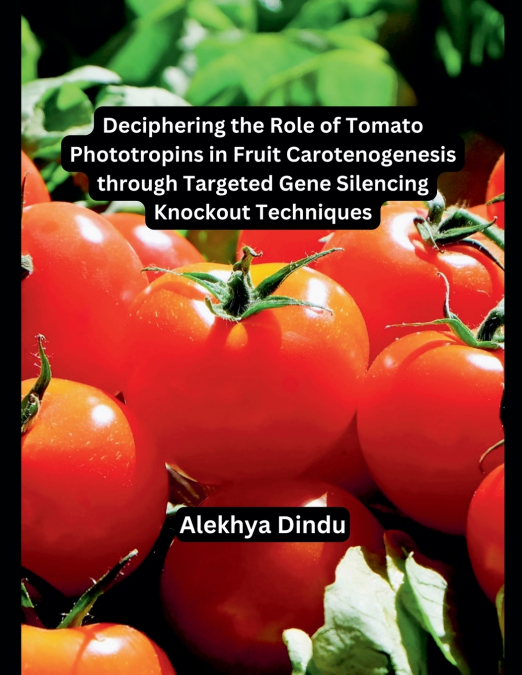
Alekhya Dindu
Fruit ripening is a complex process involving many physiological and biochemical events that leads to the accumulation of pigments, metabolic changes related to flavor and nutrient composition, softening of the cell wall, etc.. The most studied model of fleshy fruit ripening is, without a doubt, the tomato Solanum lycopersicum. In tomato, fruit ripening is accompanied by pigment production, typically of carotenoids, like lycopene and β-carotene. This accumulation of carotenoids is therefore inhibited in non-ripening mutants like Ripening Inhibitor (RIN), Colorless Non- Ripening (CNR), and Non-Ripening (NOR). These mutant loci encode transcription factors that regulate fruit ripening, associated pigmentation, and softening, acting primarily through ethylene synthesis and signaling. In tomato, ethylene differentially affects fruit ripening depending on the stage of development. In addition to ethylene, other hormones like ABA, JA, and auxin appear to be essential factors for fruit ripening and pigmentation. Together, this network of transcriptional and hormonal regulators mediates the physiological changes that make the fruit attractive to seed-dispersing organisms. The availability of a high-quality tomato genome sequence is the foundation for expanding and refining our understanding of the genetic regulation of fruit development and ripening. Phototropins are blue light sensing photoreceptors that are mainly involved in mediating the movements of plants and help optimize plants’ photosynthetic efficiency. Some of the responses mediated by phototropins are phototropism of shoots (after which they are named),negative phototropism in case of roots, movement of chloroplasts in response to change in light intensities, movement of stomata for gaseous exchange, leaf positioning and flattening, etc. All these responses help plants survive the best under changing environmental conditions by optimizing their photosynthetic efficiency. Also, all these processes have been studied using Arabidopsis as a model system and therefore are limited to vegetative tissues. The role of phototropins in organs such as fruits is relatively unknown as Arabidopsis lacks a fleshy fruit.